Vancouver art students to learn about graffiti from one of the city's masters
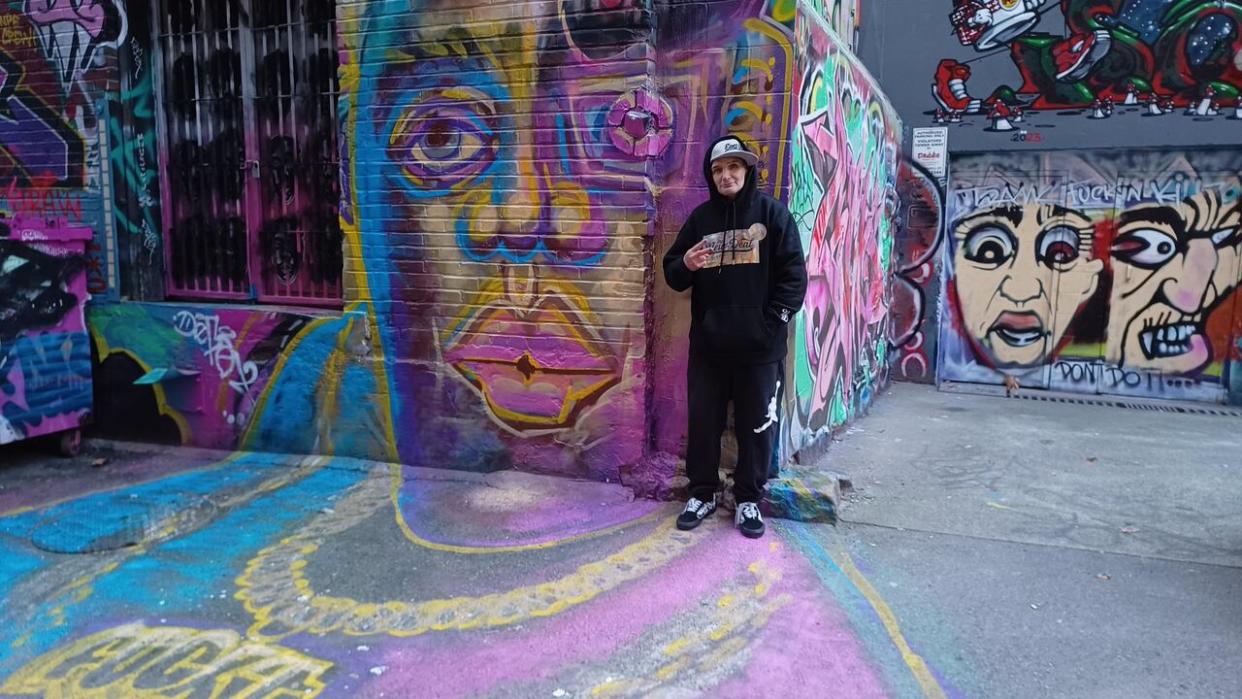
- Oops!Something went wrong.Please try again later.
Students at a Vancouver art school are set to learn about street art and its intersection with social issues from an icon in the city's graffiti scene.
James Hardy, better known as Smokey D or Smokey Devil, is behind many of the elaborate and thought-provoking murals seen throughout the city's Downtown Eastside — most of which take a compassionate look at a neighbourhood that's been hit hard by the toxic drug crisis and the COVID-19 pandemic.
Hardy has had his body of work recognized by the city in the form of an official "Smokey D Day," but he has also previously spoken about his struggles and how he has been jailed for his graffiti.
Students at Emily Carr University are now due to learn from Hardy about his work, how graffiti is often a deeply personal art form, and how to navigate street art becoming more mainstream as concerns about vandalism grow.
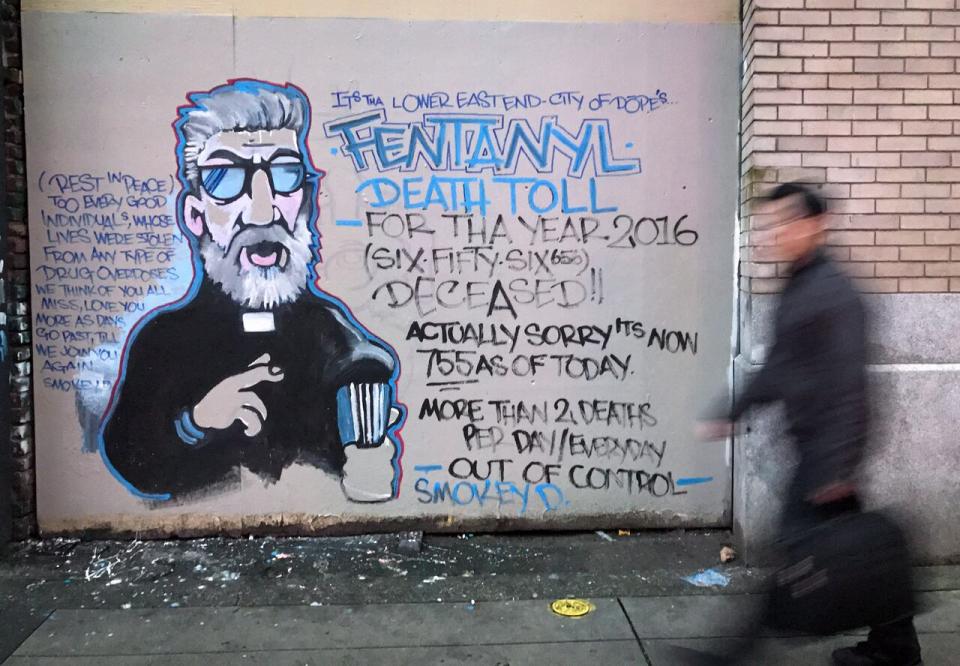
Much of Smokey D's work talks about the struggles and stigma faced by the Downtown Eastside for its association with the toxic drug crisis. The artist says he aims to put a positive spin on it through his work. (Darryl Dyck/The Canadian Press)
Smokey D is a guest lecturer for the "How to Appreciate Graffiti" course at the university, which started on Jan. 9 and is set to run through the spring term.
The artist — who already teaches street art at the Carnegie Community Centre every week — says he's looking forward to talking about his medium.
"The class itself is the first of its kind in Canada, which is groundbreaking, right?" Hardy told CBC News. "It's cool. I want to put Vancouver on the map with that.
"I want to show society, as well, that [graffiti] is not always a bad thing and that it's not always illegal and so forth."
The City of Vancouver has said that while graffiti can bring streets to life with "vibrant displays of art," nuisance graffiti can generate community safety concerns and can have impacts on businesses and residents.
The province has also frowned upon the practice, and provided businesses with millions of dollars to clean up graffiti in a program last year.
Over more than two decades of his work, however, Hardy says he has seen public opinion about graffiti shift as it becomes more mainstream.
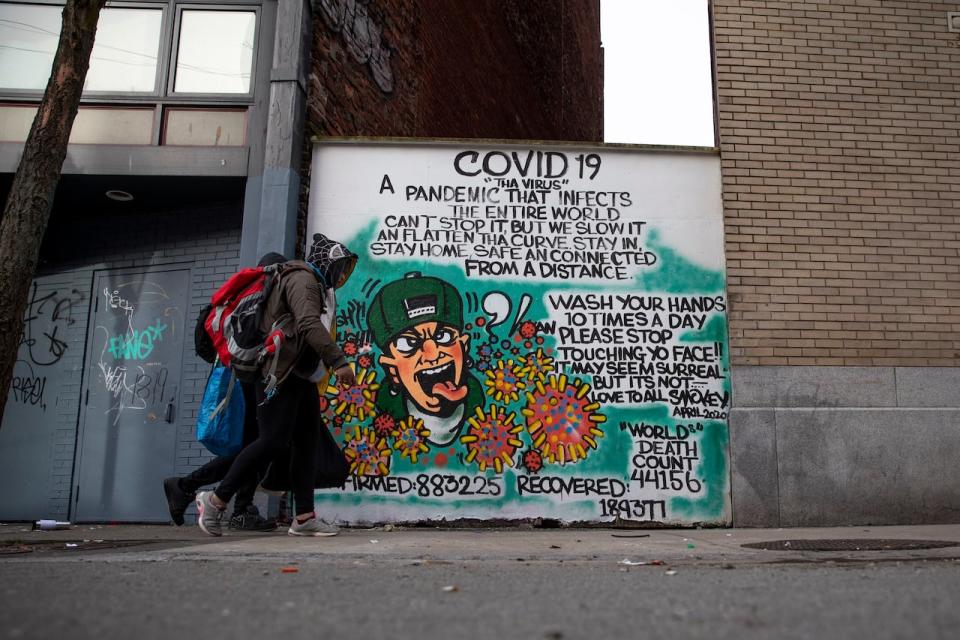
Smokey D created a mural to spread awareness of the risks of COVID-19 at a time when misinformation was rife in the Downtown Eastside. (Ben Nelms/CBC)
He even spearheaded efforts to create Vancouver's first legal graffiti wall in an alley near Pender Street — but admitted he never thought he would be teaching at a university when he first started making art.
"You should always do some kind of a message with it, and change it up, so they keep growing and growing and growing," Hardy said of his approach to his art. "... I try to make something positive about it, instead of a bad thing."
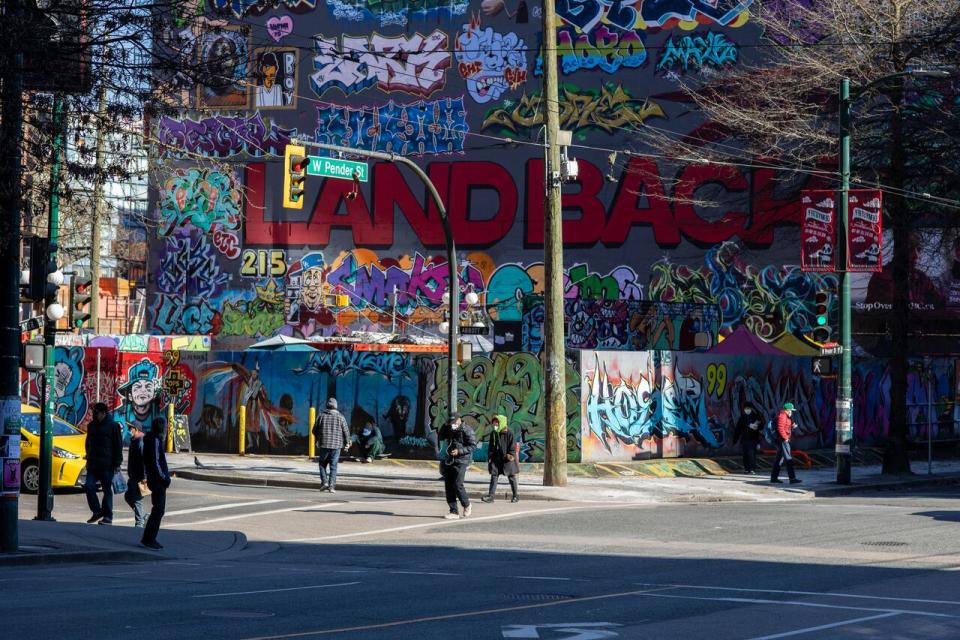
An elaborate mural by Smokey D on the 'Land Back Wall' at 99 Pender St. (Ben Nelms/CBC)
Deeply personal art
The course is being taught by Garnet Hertz, the Canada research chair in design and media art at Emily Carr.
Hertz said he first became interested in graffiti as COVID-19 restrictions were imposed. At the time, he picked up skateboarding to keep fit, saying he felt a loss of community and social connection during that period.
He said he was "blown away" by the quality of graffiti he began noticing around skate parks and subsequently approached Hardy.
"Smokey is like the ... professor of the street," Hertz said. "He's a knowledge keeper, really, and a beautiful human."
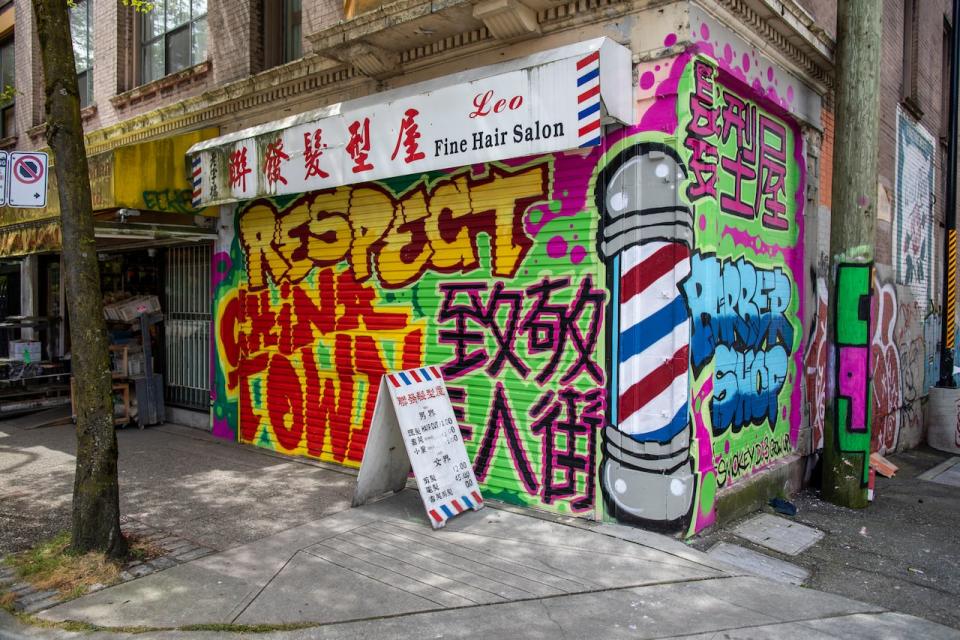
Smokey D has also painted murals to showcase the other diverse communities in Vancouver, such as Chinatown. (Ben Nelms/CBC)
Hertz says much of Hardy's work shows his commitment to the Downtown Eastside community.
"Those people that he paints are often his friends. And he does it at his own expense," he said. "He does it not to be on the news … he does it for those families.
"My hope is that people understand that it's a substantial cultural contribution … he really shows how that artwork can function."
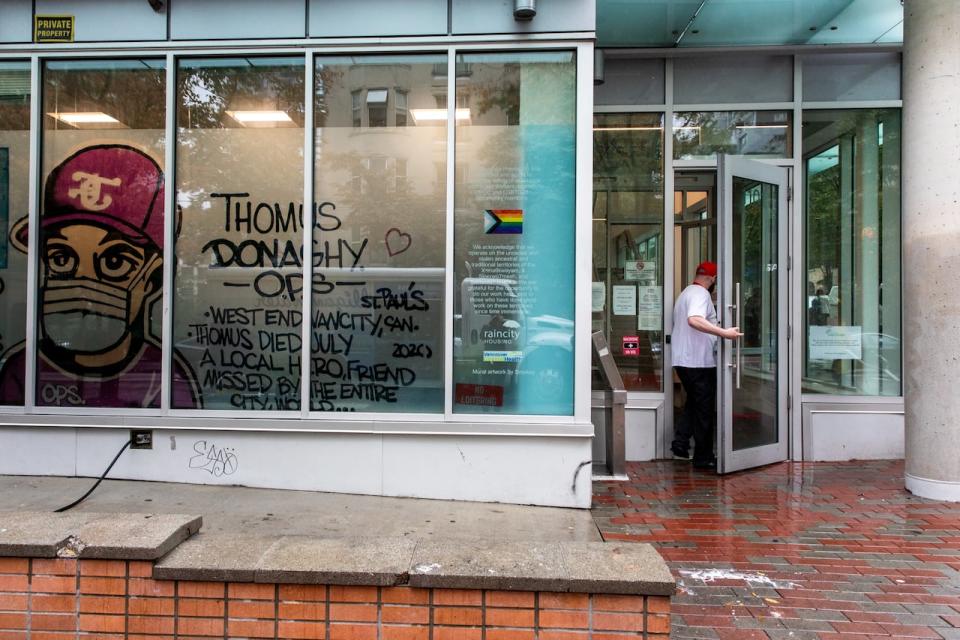
Many of the murals painted by Smokey D also celebrate his friends and Downtown Eastside community members. Here, he painted Thomus Donaghy, an overdose prevention volunteer who was killed while attending to a client. (Justine Boulin/CBC)
Contested public spaces
Hertz acknowledged, however, that street art is a thorny issue that speaks to who owns public spaces and what is considered acceptable there.
"There's an issue of class. Because often, in art school, we look at different masters that are well respected, that have famous shows in the Louvre," the professor said.
"It's important to remember that there's a lot of creative effort, and interesting and beautiful work, in the back alleys ... and Smokey embodies that."
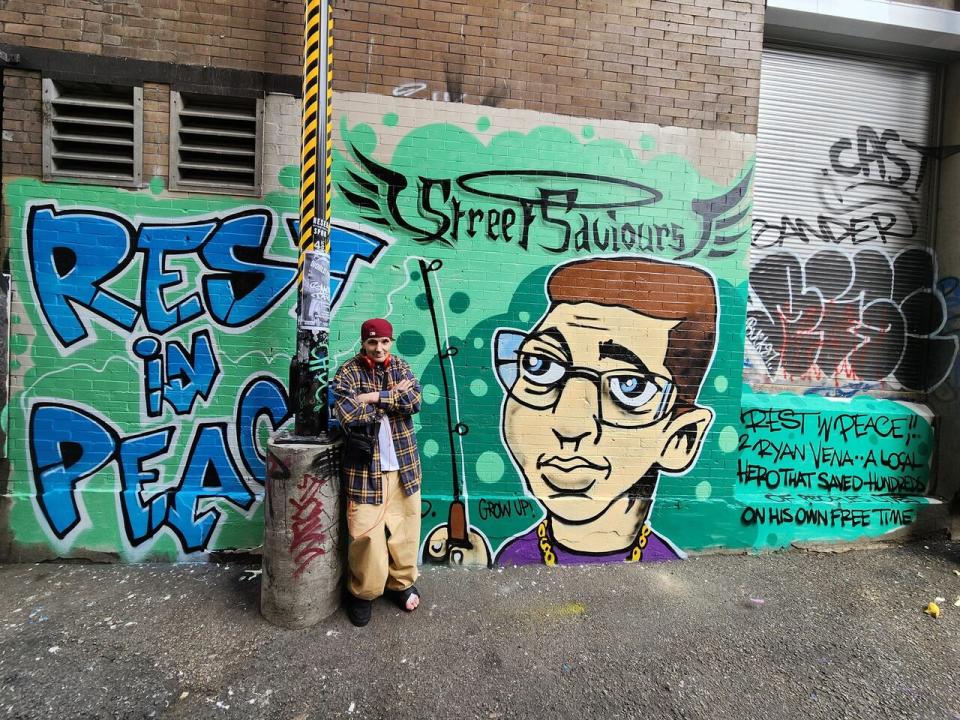
Smokey D in front of a mural of Ryan Vena, a paramedic who created volunteer patrols to reverse overdoses in the Downtown Eastside. (Submitted by Trey Helten)
Hertz also says the course would touch on how the civic response to graffiti varies widely between communities, adding that he wants municipalities to consider making more spaces for legal graffiti.
Students attending the How to Appreciate Graffiti course will have their work exhibited in Vancouver's Fingerprint Gallery starting April 5.
Walking among elaborate murals near the city's legal graffiti wall, Hardy says he hopes students have fun making their art, and recognize that graffiti is a messy, collaborative effort.
"Don't feel bad if someone [paints] over your stuff," he said. "It's just like, go over whatever and just do what you do."

